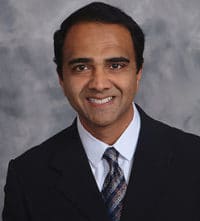
VascularCare
4255 Altamont Place
101
White Plains, MD 20695
VascularCare
6120 Brandon Ave.
216
Springfield, VA 20695

More Veins Articles
How Can I Cope With Unsightly Varicose Veins?
Varicose veins are those twisted, ropelike, blue, bulging veins just beneath the surface of the legs that resemble a road map. Nearly 30 million Americans have varicose veins; half of all women develop varicose veins to some degree as they grow older.
Varicose veins are seen in men also; as many as 20% of men have them. Varicose veins often run in families, are more common in women who have had children, and become more common and worsen with age.
Varicose veins develop when a series of small, one-way valves that prevent backflow in the veins of the legs fail. Blood pools in the legs, the leg veins bulge, and eventually become visible through the skin. This condition is called venous reflux disease.
Symptoms of varicose veins include a dull aching, heaviness, cramping and swelling in the lower part of the legs. Prolonged standing worsens symptoms.
If left untreated, they can lead to complications such as open skin ulcerations that can become infected.
Treatment begins with conservative measures to control the pooling of blood in the legs. That includes exercising, elevating your legs whenever possible and avoiding long periods of sitting or standing.
Walking, swimming and other low-impact workouts can boost blood circulation in the legs. Compression stockings, which apply pressure on the veins, also help, but must be worn nearly all of the time.
Recently, minimally invasive procedures have been developed to safely and effectively treat venous reflux disease, the underlying cause of varicose veins.
Endovenous ablation is an outpatient procedure to treat venous reflux disease that takes less than one hour and has a 95% success rate as documented in the medical literature.
Phlebectomy removes small segments of varicose veins through minute skin punctures.
Sclerotherapy involves injecting a solution into small to medium veins (also called spider veins) that causes them to wither and fade for a few months. However, new veins will appear if the underlying venous reflux disease is left untreated.
In the older days, surgical stripping was done more often, which removed part or all of a medium to large varicose vein through small incisions. Today, vein stripping is usually not needed.
Ask a vein specialist for more information on these treatments. If you have health insurance, your treatment will probably be fully covered.

















